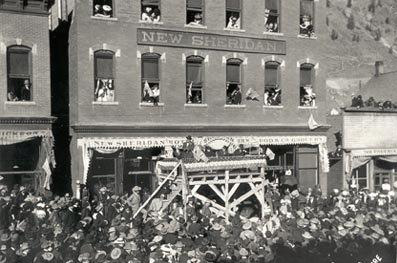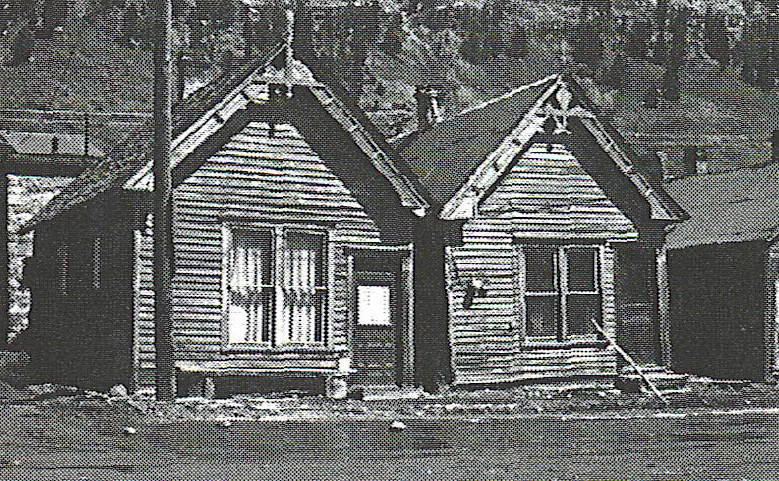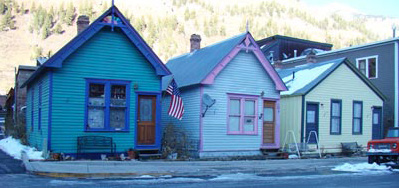What is Historically Significant in Telluride?
The historic buildings, sheds and site features of Telluride are valuable assets that contribute to the distinct character of the community. These resources have historic significance because they tell of an earlier time when mining in the Rocky Mountain West influenced the entire nation. They also convey a sense of the people that built the community during those boom times.
In addition to the area’s mining history, Telluride is known as the development site for AC (Alternating Current) power, labor struggles and William Jennings Bryan’s “Cross of Gold” speech. That significance was recognized with the designation of Telluride as a National Historic Landmark District in 1961 (amended in 1988). Today, Telluride is still special, due to the efforts of its community to preserve the historic status of the district, as well as the sense of community and quality of life.

William Jennings Bryan delivers his “Cross of Gold” speech in front of the New Sheridan Hotel in 1904
One purpose of the Design Guidelines and Standards for Building in Telluride is to inform property owners about the design policies of the Town. The policies focus on preserving the integrity of the community’s historic resources and protecting the traditional character of the town. They indicate an approach to design that will help sustain the character of the community that is so appealing to residents and visitors.
A second purpose of the Design Guidelines and Standards for Building in Telluride is to provide information for property owners to use in making decisions about their buildings. This is accomplished by addressing basic principles of urban design that promote an environment that is scaled to the pedestrian, sustains cohesive neighborhood identity and respects the unique natural setting of Telluride.

The Cribs on Pacific Avenue before restoration (circa 1980)

The Cribs in 2011. The Cribs are significant examples of the few remaining structures of their type. Valued by the community, buildings such as these prompted the citizens of Telluride to adopt the initial Design Standards in 1975
This document further provides the Town, as administered by the Historic and Architectural Review Commission (HARC), with a basis for making informed, consistent decisions about proposed new construction and alterations to buildings and sites in the community in its formal permitting processes.
Some casual observers may not understand what is significant about Telluride’s structures that survive from the mining era because they are not fancy. For those who expect all historic buildings to be mansions and monumental public edifices, the simple, vernacular construction of Telluride may appear to lack significance. The fact is, these vernacular structures help convey the reality of life in a mining boomtown at the turn of the nineteenth century, and it is their simplicity of design and modest scale that are so important. The structures that survive from that era serve as a connection with the past and help to inform people about it.
Historic primary structures, such as houses, stores and warehouses, are certainly important, but so are secondary buildings, including sheds and barns. Other site features from the period of historic significance also are valued. For example, dry stack rock retaining walls, and fences help one to understand how people once lived in Telluride. Even the manner in which a building is arranged on its site is significant. If these features are destroyed, our ability to read the historic character of the town is diminished, even if the primary structures are preserved.
Historic properties are identified in a series of professionally conducted property surveys that have evaluated the significance and integrity of each site using widely accepted criteria. Preliminary surveys conducted in the 1960s and 1970s identified many of the historic buildings that were the basis for the establishment of the historic district. The surveys of Telluride’s historic buildings were revised in 1986 and 1987. Based on these surveys, the boundaries of the National Historic Landmark District were redefined and a period of significance from 1878 to 1913 was established. A survey in 1996 provided additional information about secondary structures. An updated survey of both the primary and secondary structures was completed in October 2013.